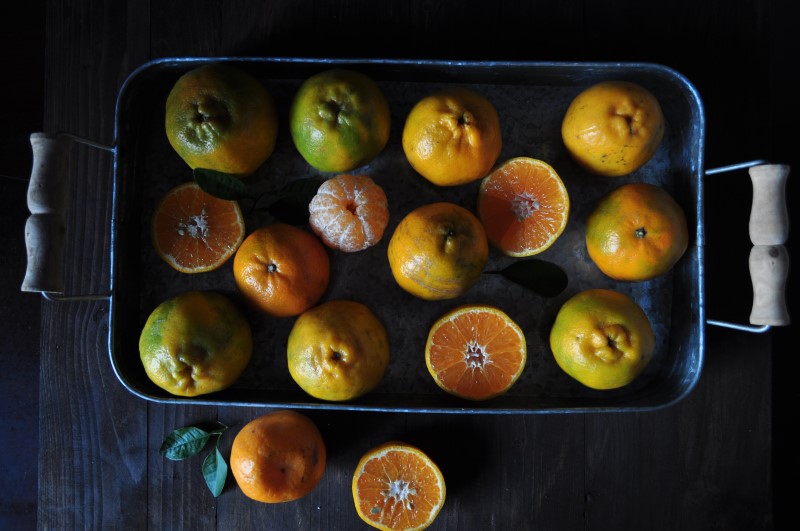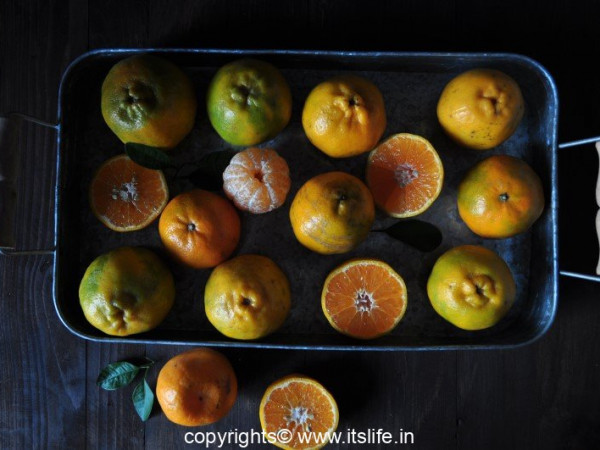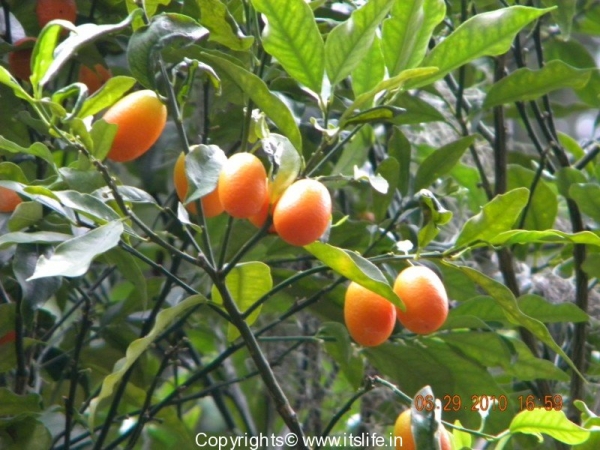A lady whom we used to address as “Chechi” / meaning sister in Malayalam in the school where I studied used to sell these tiny oranges cut in the middle with a dash of Salt and Chili powder mixture sprinkled over it. We would squeeze the fruit directly into our mouth relishing all the five tastes (bitter, sweet, sour, salt, spicy) at one go! Unknowingly we would have had our daily dose of Vitamin C. Are your eyebrows raised about hygiene…well we survived!!
Picture – Nagpur Oranges
Orange fruit is relished by one and all irrespective of age. Among fruit juices too, orange juice is the most popular and sought after. Even for making bonsais the Mandarin orange plant is the chosen one.
Picture – Kumquat Tree, photographed in Florida
There are different types of oranges like navel oranges, Valencia oranges and blood oranges. The other rare varieties are Clementine, Kumquat, Tangerine, Ugli, Tangelos, Mandarin, Minneola and Satsuma.
Picture – Tangerine Tree
Plant Summary:
Orange tree is a flowering evergreen tree belonging to the family Rutaceae of Genus Citrus. It is believed that the Orange is derived from Pomelo / Grape Fruit / Chakkotha and Mandarin / Chinese Orange in Southeast Asia.
The Orange tree grows to a height of 10m. The leaves are green, alternate, oval shape about 4 to 9 cm long. The fruit derived from this plant, which is the lovely Orange is a berry with seeds called as pip and the white thread like material under the peel is called the pith.
Picture – Orange trees near Iruppu Falls
The Orange flower has a fragrance and is used in the manufacturing of essence and perfumes. It is the state flower of Florida.
The name Orange was taken from the Sanskrit word Narang and the name over the years has been mispronounced to Orange. The color Orange was named after this fruit in 1542.
Oranges are usually peeled and eaten. The fruit is also squeezed into juice, and the pulp is used to prepare Orange marmalade along with pieces of Orange rind. The Orange peel is grated to get the zest and this is added to flavor many dishes like souffle, tarts and even salads. Orange peel is used by gardeners to repel slugs. An Orange tea is prepared by boiling the leaves of the Orange tree.
The top three Orange-producing countries are Brazil, the United States, and Mexico. In India, Nagpur and Coorg is the Orange producing areas known as Nagpur and Coorg Oranges.
Propagation:
Trees can be grown by saplings bought from nurseries and by cuttings. They are grown outdoors in warm climatic conditions. Orange trees need large amount of water. Fertilize once every 5 months.
Early season oranges mature in September or October. Mid-season oranges mature in late November to early January, and late season oranges mature in February or March.
Picture – Dry Orange Peels
Orange peels are used by gardeners to repel slugs.
Medicinal Uses:
Oranges are fruits with maximum vitamins, and the most abundant vitamin in an orange is Vitamin C. Vitamin C is very essential to our body as it makes the body immune to many diseases.
Dry orange peels are powdered and sieved and mixed with honey and curd is applied as a face pack to rejuvenate dull skin.
Since Orange contains anti oxidants, Betacarotene, Calcium, Folic acid, Magnesium, Potassium and Thiamin, it controls and cures diseases as complex as heart disease to the common cold.
Recipes using Oranges:
- Orange Marmalade
- Orange Juice
- Orange Pineapple Punch
- Orange Vanilla Cookies
- Fruit Chaat
- Fruit Custard
- Fruity Salad
- Turnip and Apple Salad
- Fruity Pulao
- Sweet Potato and Onion Soup
- Sweet Potato Soup
- Red Cabbage and Broccoli Salad
- Orange Apple Ginger Punch




